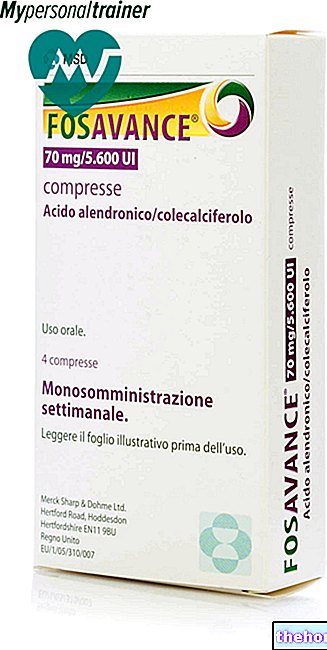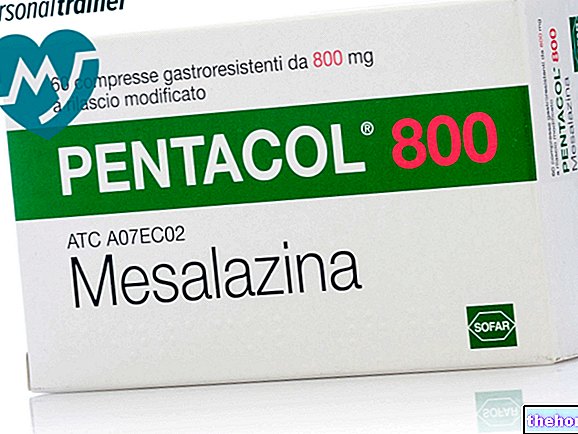Active ingredients: Amoxicillin
ZIMOX 500 mg hard capsules
ZIMOX 1 g tablets
ZIMOX 500 mg soluble and chewable tablets
ZIMOX 1 g soluble and chewable tablets
ZIMOX 250 mg / 5ml powder for oral suspension
ZIMOX 100 mg / ml oral drops, suspension
Indications Why is Zimox used? What is it for?
PHARMACOTHERAPEUTIC CATEGORY
Beta-lactam antibacterials, penicillins
THERAPEUTIC INDICATIONS
Infections from germs sensitive to amoxicillin: acute and chronic respiratory tract infections, ENT and stomatological infections, urogenital tract infections, enteric and biliary tract infections; dermatological and soft tissue infections; infections of surgical interest.
Amoxicillin is indicated in the eradication of Helicobacter pylori, producing a consequent decrease in the recurrence of the peptic ulcer.
Contraindications When Zimox should not be used
Hypersensitivity to the active substance (amoxicillin) or to any of the excipients.
Zimox is contraindicated in patients who are hypersensitive and allergic to penicillins and cephalosporins. Infections sustained by penicillinase-producing microorganisms.
Infectious mononucleosis (increased risk of skin reactions, see "Precautions for use").
Precautions for use What you need to know before taking Zimox
Before initiating therapy with amoxicillin, precautions must be taken to prevent unwanted reactions including, in particular, the careful collection of the patient's medical history regarding the possible occurrence of hypersensitivity reactions to this or other medicines (in particular to other antibiotics). In this regard, it should be considered that there are clinical and laboratory demonstrations of a partial cross-allergenicity between different beta-lactam antibiotics.
Since a very high percentage of infectious mononucleosis patients experience a rash after administration of aminopenicillins, amoxicillin should not be used in these patients.
Interactions Which drugs or foods may change the effect of Zimox
Tell your doctor or pharmacist if you have recently taken any other medicines, even those without a prescription.
Cross allergy with penicillin G and cephalosporins is possible. The concomitant intake of allopurinol increases the frequency of skin rashes. The simultaneous use of oral contraceptives reduces the absorption of the latter. A synergistic therapeutic effect is known between semi-synthetic penicillins and aminoglycosides. Probenecid administered simultaneously prolongs the blood levels of penicillins by competing with them in the kidney. The acid acetylsalicylic, phenylbutazone or other anti-inflammatory drugs in large doses, administered concomitantly with penicillins, increase their plasma levels and their half-life.
Warnings It is important to know that:
During prolonged treatment with amoxicillin, periodic haematological, renal, and hepatic checks should be performed, especially in patients with impaired hepatic or renal function.
Pseudomembranous colitis should be considered in the differential diagnosis of diarrhea arising during antibiotic treatment or shortly after discontinuation. Especially in cases of prolonged or high-dose treatment, patients should be monitored for the onset of infections with resistant organisms (eg eg: oral or vaginal candidiasis).
Caution is recommended in premature infants and during the neonatal period: renal, hepatic and haematological functions should be monitored.
Pregnancy and breastfeeding
Ask your doctor or pharmacist for advice before taking any medicine. In pregnant women and in very early childhood, the product should be administered in cases of real need, under the direct supervision of the doctor.
Effects on ability to drive and use machines
Amoxicillin did not show any interference with the ability to drive and use machines.
Important information about some of the ingredients:
Zimox powder for oral suspension and Zimox oral drops suspension contain sucrose. If your doctor has diagnosed "intolerance to some sugars, contact your doctor before taking this medicinal product."
Dosage and method of use How to use Zimox: Dosage
Unless otherwise prescribed, the average recommended doses are as follows:
1 g chewable tablets and tablets: Adults: 1 tablet 2 times a day. The soluble tablets should be taken after being dissolved in half a glass of water. If necessary, they can also be chewed.
Hard capsules of 500 mg: Adults: 1 capsule 3 times a day.
Powder for oral suspension - for pediatric use:
40-90 mg / kg / day, divided into 3 administrations, one every 8 hours.
As a guideline, by administering the 5% suspension and using the special calibrated measuring cup, the single doses, in relation to the child's body weight, are as follows: up to 10 kg of body weight: 2.5 ml every 8 hours; between 10 and 25 kg of body weight: 5 ml every 8 hours; over 25 kg of body weight: 10 ml every 8 hours.
Oral drops, suspension - for pediatric useo: 40-90 mg / kg / day, divided into 3 administrations, one every 8 hours.
Using the drops, the pipette is calibrated to 0.5 ml and 1 ml equal to 50 mg and 100 mg respectively.
The doses indicated above can be increased in the opinion of the doctor.
The duration of the treatment must be established in relation to the evolution of the infectious form.
In cystitis and acute gonococcal urethritis: 3 g in a single administration or 1.5 g in a single administration and, after 4 hours, 1.5 g in a single administration.
In Helicobacter pylori infection: 1 g every 12 hours for 7-10 days in combination with macrolides or nitroimidazoles and with proton pump inhibitors according to the following dosage schedule, which will be chosen according to the type of resistance.
Dosage regimens in the eradication of Helicobacter pylori
Triple therapy:
1) pantoprazole 40 mg twice daily
+ amoxicillin 1000 mg twice daily
+ clarithromycin 500 mg twice daily
2) pantoprazole 40 mg twice daily
+ amoxicillin 1000 mg twice daily
+ metronidazole 500 mg twice daily
3) clarithromycin 500 mg twice a day
+ amoxicillin 1000 mg twice daily
+ omeprazole 20 mg per day
4) clarithromycin 500 mg twice a day
+ lanzoprazole 30 mg twice a day
+ amoxicillin 1000 mg twice daily for 10 days
Further suppression of acid secretion may be required for ulcer reduction.
Children weighing <40 kg
The daily dosage for children is 40-90 mg / kg / day divided into two or three doses * (not to exceed 3 g / day) depending on the indication, the severity of the disease and the sensitivity of the pathogen (see the special dosage recommendations below and the SPECIAL WARNINGS section).
* Pharmacokinetic and pharmacodynamic data indicate that the dosage given three times a day is associated with an increase in efficacy, therefore the dosage given twice a day is recommended only at the highest doses.
For children weighing more than 40 kg the usual adult dosage should be given.
Special dosage recommendations
Tonsillitis: 50 mg / kg / day in two divided doses.
Acute otitis media: in areas with a high incidence of pneumococci with reduced sensitivity to penicillins, the dosage should be dictated by national / local regulations.
Early stages of Lyme disease (isolated erythema migrans): 50 mg / kg / day in three divided doses, for more than 14-21 days.
Prophylaxis for endocarditis: 50 mg amoxicillin / kg body weight given as a single dose one hour before surgery.
Dosage in renal impairment:
The dose should be reduced in patients with severe renal impairment. In patients with creatinine clearance below 30 ml / min an increase in the dosing interval and a decrease in the total daily dose is recommended (see section SPECIAL WARNINGS).
Renal impairment in children weighing less than 40 kg:
"Powder for oral suspension": method of preparation and storage of the suspension
The preparation (reconstitution) of the suspension must be carried out by adding water up to the level indicated by the arrow on the bottle label. Shake.
After shaking, if necessary, add water again up to the above level. SHAKE BEFORE EACH USE.
After this preparation, the reconstituted suspension is stable for 7 days at room temperature. After this period, any residual product must be eliminated
"Oral drops, suspension": method of preparation and storage of the drops in suspension
The preparation (reconstitution) of the drops must be carried out by adding water up to the level indicated by the notch on the measuring cup attached to the package. Then pour the water into the bottle and shake. SHAKE BEFORE EACH USE.
After this preparation, the reconstituted suspension drops are stable for 7 days at room temperature. After this period, any residual product must be eliminated.
Overdose What to do if you have taken too much Zimox
In case of accidental ingestion / intake of an overdose of Zimox, notify your doctor immediately or go to the nearest hospital.
If you have any questions about the use of Zimox, ask your doctor or pharmacist. No symptoms of overdose have been described in humans.
Side Effects What are the side effects of Zimox
Like all medicines, Zimox can cause side effects, although not everybody gets them.
Skin and subcutaneous tissue disorders
Occasionally skin rash (urticarial or erythematous, maculopapular, morbilliform); rarely angioedema, exfoliative dermatitis, toxic epidermal necrolysis (Lyell's syndrome), erythema multiforme; isolated cases of Stevens-Johnson syndrome.
Disorders of the blood and lymphatic system
Frequently eosinophilia; rarely haemolytic anemia and positive direct Coombs test. Rarely, anemia, leukopenia, neutropenia, agranulocytosis, thrombocytopenia, thrombocytopenic purpura, abnormal platelet aggregation, prolongation of bleeding time or activated partial thromboplastin time can be found.
General disorders and administration site conditions
Rarely anaphylactic reactions with characteristic symptoms: severe and sudden hypotension, rapid and slow heart rate, unusual tiredness or weakness, anxiety, agitation, dizziness, loss of consciousness, difficulty in breathing or swallowing, generalized itching especially of the soles of the feet and palms of the hands, hives with or without angioedema (swollen and itchy skin areas located most frequently in the extremities, external genitalia and face, especially in the eye and lip region), redness of the skin especially around the ears, cyanosis, profuse sweating , nausea, vomiting, crampy abdominal pain, diarrhea; serum sickness-like reactions (hives or rash accompanied by arthritis, arthralgia, myalgia and fever). Rarely: superinfections from resistant microorganisms.
Gastrointestinal disorders
Occasionally: diarrhea, vomiting, anorexia, epigastric pain, gastritis; rarely: glossitis, stomatitis, pseudomembranous colitis.
Renal and urinary disorders
Rarely acute interstitial nephritis.
Hepatobiliary disorders
Rarely moderate increase in serum transaminases, other signs of hepatic dysfunction (cholestatic, hepatocellular, mixed hepatocellular cholestatic).
Nervous system disorders
Rarely headache, dizziness.
Compliance with the instructions contained in the package leaflet reduces the risk of undesirable effects.
If any of the side effects gets serious or if you notice any side effects not listed in this leaflet, please inform your doctor or pharmacist.
Expiry and Retention
Expiry: see the expiry date indicated on the package.
The expiry date refers to the product in intact and correctly stored packaging.
Warning: do not use the medicine after the expiry date indicated on the package. After reconstitution, both the oral suspension and the oral suspension drops are stable for 7 days at room temperature. After this period, any residual product must be eliminated.
Medicines should not be disposed of via wastewater or household waste. Ask your pharmacist how to dispose of medicines you no longer use. This will help protect the environment.
KEEP OUT OF THE REACH AND SIGHT OF CHILDREN
COMPOSITION
ZIMOX 500 mg hard capsules
Each capsule contains:
active ingredient: amoxicillin trihydrate 574 mg equal to amoxicillin 500 mg.
Excipients: magnesium stearate. Capsule constituents: gelatin, titanium dioxide (E171), yellow iron oxide (E 172).
ZIMOX 1 g tablets
Each tablet contains:
active ingredient: amoxicillin trihydrate g 1.148 equal to amoxicillin g 1
Excipients: sodium carboxymethyl starch, colloidal silica, magnesium stearate, microcrystalline cellulose.
ZIMOX 500 mg soluble and chewable tablets
Each 500 mg tablet contains:
active ingredient: amoxicillin trihydrate mg 573.96 equal to amoxicillin mg 500.
Excipients: microcrystalline cellulose, crospovidone, raspberry flavor, sodium saccharinate, sodium lauryl sulfate, magnesium stearate.
ZIMOX 1 g soluble and chewable tablets
Each 1 g tablet contains:
active ingredient: amoxicillin trihydrate g 1.148 equal to amoxicillin g 1.
Excipients: microcrystalline cellulose, crospovidone, raspberry flavor, sodium saccharinate, sodium lauryl sulfate, magnesium stearate.
ZIMOX 250 mg / 5 ml powder for oral suspension
5 ml of suspension contain:
active ingredient: amoxicillin trihydrate 287 mg equal to amoxicillin 250 mg.
Excipients: sodium edetate, sodium benzoate, sodium citrate, silicon dioxide, sodium alginate, raspberry powder flavor, sucrose
ZIMOX 100 mg / ml oral drops, suspension
1 ml of suspension contains:
active ingredient: amoxicillin trihydrate 114.8 mg equal to amoxicillin 100 mg.
Excipients: disodium edetate, sodium benzoate, sodium citrate, silicon dioxide, sodium saccharinate, raspberry flavor, sucrose.
PHARMACEUTICAL FORM AND CONTENT
- Hard capsules - pack of 12 capsules of 500 mg
- Tablets - pack of 12 tablets of 1 g
- Soluble and chewable tablets - pack of 12 tablets of 500 mg or 1 g
- Powder for oral suspension - 1 bottle 100ml of 250mg / 5ml
- Oral drops, suspension - 1 bottle of powder 20 ml of 100 mg / ml
Source Package Leaflet: AIFA (Italian Medicines Agency). Content published in January 2016. The information present may not be up-to-date.
To have access to the most up-to-date version, it is advisable to access the AIFA (Italian Medicines Agency) website. Disclaimer and useful information.
01.0 NAME OF THE MEDICINAL PRODUCT
ZIMOX
02.0 QUALITATIVE AND QUANTITATIVE COMPOSITION
ZIMOX 500 mg hard capsules
Each capsule contains:
active ingredient: amoxicillin trihydrate 574 mg equal to amoxicillin 500 mg.
ZIMOX 1 g tablets
Each tablet contains:
active ingredient: amoxicillin trihydrate g 1.148 equal to amoxicillin g 1.
ZIMOX 500 mg soluble and chewable tablets
Each 500 mg tablet contains:
active ingredient: amoxicillin trihydrate mg 573.96 equal to amoxicillin mg 500.
ZIMOX 1 g soluble and chewable tablets
Each 1 g tablet contains:
active ingredient: amoxicillin trihydrate g 1.148 equal to amoxicillin g 1.
ZIMOX 250 mg / 5 ml powder for oral suspension
5 ml of suspension contain:
active ingredient: amoxicillin trihydrate 287 mg equal to amoxicillin 250 mg.
Excipients: sucrose
ZIMOX 100 mg / ml oral drops, suspension
1 ml of suspension contains: 114.8 mg amoxicillin trihydrate equal to 100 mg amoxicillin.
Excipients: sucrose
For the full list of excipients see section 6.1
03.0 PHARMACEUTICAL FORM
Hard capsules.
Tablets.
Soluble and chewable tablets.
Powder for oral suspension.
Oral drops, suspension.
04.0 CLINICAL INFORMATION
04.1 Therapeutic indications
Infections from germs sensitive to amoxicillin: acute and chronic respiratory tract infections, ENT and stomatological infections, urogenital tract infections, enteric and biliary tract infections; dermatological and soft tissue infections; infections of surgical interest.
Amoxicillin is indicated in the "eradication of"Helicobacter pylori, producing a consequent decrease in the recurrence of the peptic ulcer.
04.2 Posology and method of administration
Unless otherwise prescribed, the average recommended doses are as follows:
1 g chewable tablets and tablets
Adults: 1 tablet 2 times a day.
The soluble tablets should be taken after being dissolved in half a glass of water. If necessary, they can also be chewed.
Hard capsules of 500 mg
Adults: 1 capsule 3 times a day.
Powder for oral suspension - for pediatric use
40-90 mg / kg / day, divided into 3 administrations, one every 8 hours.
As a guideline, by administering the 5% suspension and using the special calibrated measuring cup, the single doses, in relation to the child's body weight, are as follows: up to 10 kg of body weight: 2.5 ml every 8 hours; between 10 and 25 kg of body weight: 5 ml every 8 hours; over 25 kg of body weight: 10 ml every 8 hours.
Oral drops-suspension - for pediatric use
40-90 mg / kg / day, divided into 3 administrations, one every 8 hours.
Using the drops, the pipette is calibrated to 0.5 ml and 1 ml equal to 50 mg and 100 mg respectively.
The doses indicated above can be increased in the opinion of the doctor.
The duration of the treatment must be established in relation to the evolution of the infectious form.
In cystitis and acute gonococcal urethritis: 3 g in a single administration or 1.5 g in a single administration and, after 4 hours, 1.5 g in a single administration.
In the"infection with Helicobacter pylori : 1 g every 12 hours for 7-10 days in combination with macrolides or nitroimidazoles and with proton pump inhibitors according to the following dosage schedule, which will be chosen according to the type of resistance.
Dosage regimens in the eradication of Helicobacter pylori
Triple therapy:
1) pantoprazole 40 mg twice daily
+ amoxicillin 1000 mg twice daily
+ clarithromycin 500 mg twice daily
2) pantoprazole 40 mg twice daily
+ amoxicillin 1000 mg twice daily
+ metronidazole 500 mg twice daily
3) clarithromycin 500 mg twice a day
+ amoxicillin 1000 mg twice daily
+ omeprazole 20 mg per day
4) clarithromycin 500 mg twice a day
+ lanzoprazole 30 mg twice a day
+ amoxicillin 1000 mg twice daily for 10 days
Further suppression of acid secretion may be required for ulcer reduction.
Children with weight
The daily dosage for children is 40-90 mg / kg / day divided into two or three doses * (not to exceed 3 g / day) depending on the indication, the severity of the disease and the sensitivity of the pathogen (see the special dosing recommendations below and sections 4.4, 5.1 and 5.2).
* Pharmacokinetic and pharmacodynamic data indicate that the dosage given three times a day is associated with an increase in efficacy, therefore the dosage given twice a day is recommended only at the highest doses.
For children weighing more than 40 kg the usual adult dosage should be given.
Special dosage recommendations
Tonsillitis: 50 mg / kg / day in two divided doses.
Acute otitis media: in areas with a high incidence of pneumococci with reduced sensitivity to penicillins, the dosage should be dictated by national / local regulations.
Early stages of Lyme disease (isolated erythema migrans): 50 mg / kg / day in three divided doses, for more than 14-21 days.
Prophylaxis for endocarditis: 50 mg amoxicillin / kg body weight given as a single dose one hour before surgery.
Dosage in impaired renal function
The dose should be reduced in patients with severe renal impairment. In patients with creatinine clearance below 30 ml / min an increase in the dosing interval and a decrease in the total daily dose is recommended (see sections 4.4 and 5.2).
Renal impairment in children weighing less than 40 kg:
Powder for oral suspension
Methods of preparation and conservation of the suspension
Reconstitution of the suspension must be done by adding water up to the level indicated by the arrow on the bottle label. Shake.
After shaking, if necessary, add water again up to the above level.
Shake before each use.
Oral drops, suspension
Methods of preparation and storage of the drops in suspension
The reconstitution of the drops must be carried out by adding water up to the level indicated by the mark on the measuring cup attached to the package. Then pour the water into the bottle and shake.
Shake before each use.
04.3 Contraindications
Hypersensitivity to the active substance or to any of the excipients.
Zimox is contraindicated in patients who are hypersensitive and allergic to penicillins and cephalosporins. Infections sustained by penicillinase-producing microorganisms.
Infectious mononucleosis (increased risk of skin reactions - see section 4.4).
04.4 Special warnings and appropriate precautions for use
Before initiating therapy with amoxicillin, precautions must be taken to prevent unwanted reactions including, in particular, the careful collection of the patient's medical history regarding the possible occurrence of hypersensitivity reactions to this or other medicines (in particular to other antibiotics). In this regard, it should be considered that there are clinical and laboratory demonstrations of a partial cross-allergenicity between different beta-lactam antibiotics. During prolonged treatment with amoxicillin, periodic haematological, renal, and hepatic checks should be performed, especially in patients with impaired hepatic or renal function.
Since a very high percentage of infectious mononucleosis patients experience a rash after administration of aminopenicillins, amoxicillin should not be used in these patients.
Pseudomembranous colitis should be considered in the differential diagnosis of diarrhea arising during antibiotic treatment or shortly after discontinuation. Especially in cases of prolonged or high-dose treatment, patients should be monitored for the onset of infections with resistant organisms (eg eg: oral or vaginal candidiasis).
Caution is recommended in premature infants and during the neonatal period: renal, hepatic and haematological functions should be monitored.
Important information about some of the excipients
ZIMOX powder for oral suspension and ZIMOX oral drops, suspension contain sucrose.
Patients with rare problems of fructose intolerance, glucose-galactose malabsorption, or sucrase-isomaltase insufficiency should not take this medicine.
04.5 Interactions with other medicinal products and other forms of interaction
Cross allergy with penicillin G and cephalosporins is possible. The concomitant intake of allopurinol increases the frequency of skin rashes. The simultaneous use of oral contraceptives reduces the absorption of the latter. A synergistic therapeutic effect is known between semi-synthetic penicillins and aminoglycosides. Probenecid administered simultaneously prolongs the blood levels of penicillins by competing with them in the kidney. The acid acetylsalicylic, phenylbutazone or other anti-inflammatory drugs in large doses, administered concomitantly with penicillins, increase their plasma levels and their half-life.
04.6 Pregnancy and breastfeeding
In pregnant women and in very early childhood, the product should be administered in cases of real need, under the direct supervision of the doctor.
04.7 Effects on ability to drive and use machines
Amoxicillin did not show any interference with the ability to drive and use machines.
04.8 Undesirable effects
Skin and subcutaneous tissue disorders
Occasionally skin rash (urticarial or erythematous, maculopapular, morbilliform); rarely angioedema, exfoliative dermatitis, toxic epidermal necrolysis (Lyell's syndrome), erythema multiforme; isolated cases of Stevens-Johnson syndrome.
Disorders of the blood and lymphatic system
Frequently eosinophilia; rarely haemolytic anemia and positive direct Coombs test.
Rarely, anemia, leukopenia, neutropenia, agranulocytosis, thrombocytopenia, thrombocytopenic purpura, abnormal platelet aggregation, prolongation of bleeding time or activated partial thromboplastin time can be found.
Systemic and administration site disorders
Rarely anaphylactic reactions with characteristic symptoms: severe and sudden hypotension, rapid and slow heart rate, unusual tiredness or weakness, anxiety, agitation, dizziness, loss of consciousness, difficulty in breathing or swallowing, generalized itching especially of the soles of the feet and palms of the hands, hives with or without angioedema (swollen and itchy skin areas located most frequently in the extremities, external genitalia and face, especially in the eye and lip region), redness of the skin especially around the ears, cyanosis, profuse sweating , nausea, vomiting, crampy abdominal pain, diarrhea; serum sickness-like reactions (hives or rash accompanied by arthritis, arthralgia, myalgia and fever).
Rarely: superinfections from resistant microorganisms.
Gastrointestinal disorders
Occasionally: diarrhea, vomiting, anorexia, epigastric pain, gastritis; rarely: glossitis, stomatitis, pseudomembranous colitis.
Renal and urinary disorders
Rarely acute interstitial nephritis.
Hepatobiliary disorders
Rarely moderate increase in serum transaminases, other signs of hepatic dysfunction (cholestatic, hepatocellular, mixed hepatocellular cholestatic).
Nervous system disorders
Rarely headache, dizziness.
04.9 Overdose
No symptoms of overdose in humans have been described so far.
05.0 PHARMACOLOGICAL PROPERTIES
05.1 Pharmacodynamic properties
Therapeutic drug category: beta-lactam antibacterials, penicillins.
ATC code: J01CA04
Amoxicillin is a semi-synthetic penicillin derived from 6-amino penicillanic acid. Its mechanism of action, as for all penicillins, is bactericidal and is carried out by inhibiting the synthesis of the peptidoglycan, an essential constituent of the bacterial part. The molecule is active on numerous gram-positive and gram-negative microorganisms such as Streptococcus pyogenes, Str.viridans, Str. Faecalis, Diplococcus pneumoniae,Corynebacterium species, Staphylococcus aureus (penicillin-sensitive), S. epidermidis, Haemophilus influenzae, Listeria monocytogenes,Bordetella pertussis, Neisseria meningitidis, N. gonorrhoeae, Escherichia coli, Salmonella species, Shigella species, Proteus mirabilis, Brucella species.
05.2 Pharmacokinetic properties
Amoxicillin is stable in an acidic environment. After oral administration the drug is absorbed 74 to 92% of the administered dose with peak blood levels within 1-2 hours. After 8 hours the levels are still therapeutically useful. Absorption is not affected. by the simultaneous presence of food in the stomach. Plasma protein binding is approximately 20%. The distribution of the tissues is particularly favorable with high concentrations especially in bronchial secretions, especially if of the mucous type, in the exudates of the middle ear and paranasal sinuses. The biliary concentrations are also high.
In the amniotic fluid and in the blood of the umbilical cord, concentrations equal respectively to 50-80% and to 33% of those detectable in maternal blood are reached. CSF levels are 5-10% of serum levels in subjects with intact meninges. In the case of meningeal inflammation, the concentrations are higher. Elimination occurs mainly via the kidney in an unchanged and therapeutically active form for over 70%. The plasma half-life in subjects with normal renal function is approximately 1 hour. In conditions of renal insufficiency the half-life increases up to 5-7 hours in patients with Clcr of 10-30 ml / min and up to 10-15 hours in anuric patients.
In hemodialysis patients the half-life is 3.5 hours.
In premature infants with gestational age of 26-33 weeks, the total body clearance after intravenous administration of amoxicillin, on the third day of life, is in the range of 0.75 - 2 ml / min, very similar to inulin clearance. (glomerular filtration rate, GFR) in this population. Following oral administration, the absorption pattern and bioavailability of amoxicillin in young children may be different than in adults. As a consequence of the decrease in CL, drug exposure may be increased in this patient group, although this increase may be partly decreased by reduced bioavailability following oral administration.
05.3 Preclinical safety data
The data of the acute toxicity studies studied on animal species at different dosages even far higher than the therapeutic ones indicate that the drug is devoid of toxic effects. Even for prolonged administration the drug did not cause alterations in the various organs. Amoxicillin was also found to be neither embryotoxic nor teratogenic.
06.0 PHARMACEUTICAL INFORMATION
06.1 Excipients
Hard capsules: magnesium stearate. Capsule constituents: gelatin, titanium dioxide (E171), yellow iron oxide (E 172).
Tablets: sodium carboxymethyl starch, colloidal silica, magnesium stearate, microcrystalline cellulose.
Soluble and chewable tablets: microcrystalline cellulose, crospovidone, raspberry flavor, sodium saccharinate, sodium lauryl sulfate, magnesium stearate.
Powder for oral suspension: sodium edetate, sodium benzoate, sodium citrate, silicon dioxide, sodium alginate, raspberry powder flavor, sucrose.
Oral drops, suspension: disodium edetate, sodium benzoate, sodium citrate, silicon dioxide, sodium saccharinate, raspberry flavor, sucrose.
06.2 Incompatibility
In solution, amoxicillin is incompatible with sodium bicarbonate, cimetidine, aminophylline, ACTH, noradrenaline, chloramphenicol, tetracycline, erythromycin, vitamins B and K.
06.3 Period of validity
Hard capsules, tablets, soluble and chewable tablets: 3 years.
Powder for oral suspension, oral drops, suspension: 2 years.
After reconstitution of the oral suspension and drops, the product is stable for 7 days at room temperature. After this period, any residuals must be eliminated.
06.4 Special precautions for storage
This medicine does not require any special storage conditions.
06.5 Nature of the immediate packaging and contents of the package
Aluminum / PVC / PVDC blister; box of 12 hard capsules of 500 mg
Aluminum / PVC / PVDC blister; box of 12 tablets of 1 g
Aluminum / PVC / PVDC blister; box of 12 soluble and chewable tablets 500 mg;
Aluminum / PVC / PVDC blister; box of 12 soluble and chewable tablets 1 g.
Glass bottle with polythene / aluminum closure; powder for oral suspension 250 mg / 5 ml, 1 bottle 100 ml + 1 graduated measuring spoon.
Glass bottle with polythene / aluminum closure; oral drops, suspension 100 mg / ml, 1 bottle drops 20 ml + 1 measuring cup and pipette
06.6 Instructions for use and handling
After preparation, Zimox powder for oral suspension and Zimox oral drops, reconstituted suspension are stable for 7 days at room temperature. After this period, any residual product must be eliminated.
07.0 MARKETING AUTHORIZATION HOLDER
PFIZER ITALIA S.r.l.
Via Isonzo, 71 - 04100 Latina
08.0 MARKETING AUTHORIZATION NUMBER
AIC 023086061 - 500 mg hard capsules - 12 capsules
AIC 023086150 - 1 g tablets - 12 tablets
AIC 023086162 - 500 mg soluble and chewable tablets - 12 tablets
AIC 023086174 - 1 g soluble and chewable tablets - 12 tablets
AIC 023086097 - 250 mg / 5 ml powder for oral suspension - 1 bottle 100 ml
AIC 023086186 - 100 mg / ml oral drops, suspension - 1 bottle of powder 20 ml
09.0 DATE OF FIRST AUTHORIZATION OR RENEWAL OF THE AUTHORIZATION
May 31, 2010
10.0 DATE OF REVISION OF THE TEXT
September 17, 2012




























